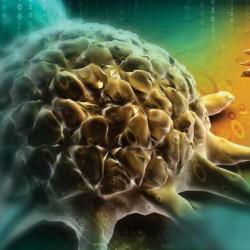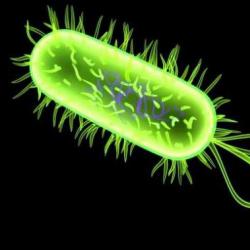What kingdoms of living organisms does biology study? Sections of biology and what they study. What kingdoms of living organisms are distinguished in nature? What kingdoms is nature divided into?
Remember
What living organisms do you know?
Answer. Living organisms are viruses, bacteria, fungi, plants and animals.
What groups can living organisms known to you be divided into?
Questions after §8
1. What does the word “classification” mean? Why is classification needed?
Answer. Classification - ordering, distribution of organisms into groups, based on the similarity of external and internal structure, as well as related relationships of living beings.
2. Explain by what characteristics do scientists classify organisms as one species?
Answer. The basic and smallest unit of classification is species. Signs that allow organisms to be united into one species are similarities in structure and characteristics of life, capable of interbreeding and producing viable offspring similar to their parents.
3. Look at Figure 28. Which of the indicated kingdoms of living nature are already familiar to you? Give examples of representatives of these kingdoms.
Answer. Wildlife is divided into 5 kingdoms:
Viruses (representatives: influenza, smallpox, measles viruses);
Bacteria (representatives: lactic acid bacteria, tuberculosis bacillus, vibrio cholerae);
Mushrooms (representatives – yeast, mold, honey fungus);
Plants (representatives - pine, fern, birch);
Animals (representatives: earthworm, butterfly, frog).
4. What are the smallest organisms on Earth? How did scientists manage to discover and study them?
Answer. The smallest living organisms on Earth are viruses. They have a noncellular structure. The first viruses were discovered in 1892 by the Russian scientist D.I. Ivanovsky. Ivanovsky decided to find out whether any bacterium causes tobacco mosaic. He examined many diseased leaves under an optical microscope (there were no electronic ones yet) but in vain - no signs of bacteria could be found. “Or maybe they are so small that they cannot be seen?” - thought the scientist. If this is the case, then they must pass through filters that trap common bacteria on their surface. Similar filters already existed at that time. Ivanovsky placed a finely ground leaf of diseased tobacco into the liquid, which he then filtered. Bacteria were retained by the filter, and the filtered liquid had to be sterile and not capable of infecting a healthy plant if it came into contact with it. But she was infectious! This is the essence of Ivanovsky’s discovery. This is where the difference in size comes into play. Viruses are approximately 100 times smaller than bacteria, so they freely passed through all the filters and infected healthy plants, falling on them along with the filtered liquid. Bacteria are also distinguished by their ability to reproduce in artificially created nutrient media, but the viruses discovered by Ivanovsky did not do this. The term virus (from the Latin virus - poison) appeared later. This is how Ivanovsky discovered viruses - a new form of life.
1. Kingdom(lat. regnum) - hierarchical level of scientific classification of biological species. The taxon of the highest level among the main ones.
Historically, there are five kingdoms:
* Animals
* Plants
* Mushrooms
* Bacteria
* Viruses
Since 1977, two more kingdoms have also been added to them:
* Protists
* Archaea
Now (since 1998) there is another one:
* Chromists
2. cells- this is the unity of the principle of the structure and development of the world of plants, animals and other living organisms with a cellular structure. cellular structure, metabolism and energy, nutrition, Respiration, Growth and development.
3. They differ in cell structure. Animals do not have Mitochondria, Plastids and Chloroplasts.
4. The process of plant nutrition is very complex. From the soil, plants absorb macro- and microelements, which enter the plants in the form of salts and ions dissolved in water. Plants obtain carbon to build their bodies by breathing from the air, taking it from carbon dioxide. They use energy to convert mineral compounds into organic ones in the form of light radiation.
5. ALIVE: 1.breathe, 2.eat, 3.move, 4.grow and 5.reproduce.
The most important difference between living organisms and elements of inanimate nature is the constant exchange of substances and energy between the organism and the environment. Here are the main properties of living things:
Breath- a process in which gas exchange occurs between the body and the environment.
Nutrition- absorption of nutrients and food by a living organism.
Selection- the process of removing waste products that are unnecessary or harmful to organisms.
Movement- a change in the body or parts of an individual’s body in space.
Height— increase in the mass and size of an individual due to biosynthesis processes.
Development- improvement of the body throughout life.
Irritability- the ability of the body to selectively respond to environmental influences.
Reproduction- reproduction of similar individuals.
Heredity- the ability to pass on one’s characteristics to descendants.
6. METABOLISM(metabolism), the totality of all chemical changes and all types of transformations of substances and energy in organisms that ensure the development, vital activity and self-reproduction of organisms, their connection with the environment and adaptation to changes in external conditions.
7. Irritability- the main, primary property of a living organism to show activity (reaction) in response to the influence of stimuli (objects, phenomena, processes and other agents of the external and internal environment) on sensory, perceptive organs.
8. Animals are forced to move in search of food. Everything plants need for nutrition is found in the soil.
9. ridding the body of unnecessary substances and excess water.
10. When a plant grows, it moves. The same ivy, vine. In everyday life, movement by plant forces is hardly possible. If it is not a carnivorous plant (like a flycatcher).
Initially, people divided all living nature into animals. This classification is reflected in the works of Aristotle. Even Carl Linnaeus, the founder of the modern classification of species, who lived in the 18th century, still divided living organisms only into the plant and animal kingdoms.
In the mid-17th century, single-celled organisms were discovered, initially they were distributed into two known kingdoms, and only in the 19th century a separate kingdom was allocated for them - Protists.
After the electron microscope appeared, it became possible to study the smallest organisms in detail. Scientists have found that some of them have a nucleus, while others do not, and it was proposed to divide all living organisms according to this characteristic.
Animal Kingdom
This kingdom includes multicellular heterotrophic organisms; they are distinguished by independent mobility and nutrition mainly by ingesting food. The cells of such organisms usually do not have a dense wall.
Kingdom of Mushrooms
Fungi are multicellular saprophytes, that is, organisms that feed by processing dead organic matter. They differ in that their activities do not leave excrement. Fungi reproduce by spores. The kingdom is divided into a subkingdom and a subkingdom of myxomycetes; scientists argue about whether the latter should be classified as the kingdom of Mushrooms.
Kingdom Bacteria
The kingdom of Bacteria includes single-celled organisms that do not have a full-fledged nucleus. There are autotrophic bacteria and . Bacteria are usually motile. Since bacteria do not have a nucleus, they are classified as a domain. All bacteria have a dense cell wall.
Kingdom Protists
Organisms whose cells have a nucleus are most often unicellular. Organisms fall into the kingdom of Protists according to the residual principle, that is, when they cannot be attributed to other kingdoms of organisms. Protists also include protists.
Kingdom of Viruses
Viruses are located on the border between living and nonliving nature; they are non-cellular formations that are a set of complex molecules in a protein shell. Viruses can only reproduce while in a living cell of another organism.
Kingdom of the Chromists
A small number of organisms - some algae, several fungi-like organisms - have 2 nuclei in their cells. They were separated into a separate kingdom only in 1998.
Kingdom Archaea
The first archaea were found in geothermal springs
The simplest prenuclear single-celled organisms that were among the first to appear on Earth; they are adapted to live not in an oxygen atmosphere, but in a methane atmosphere, so they are found in extreme environments.
Test yourself
1. What kingdoms do scientists divide living nature into?
Plants, Animals, Viruses, Bacteria, Fungi.
2. What is the structure of a cell?
Main parts – nucleus, cytoplasm, cell membrane, organoids
3. What is the difference between plant and bacterial cells?
Bacterial cells lack basic organelles and a nucleus. Plants are eukaryotes, Bacteria are prokaryotes.
4. What is fauna?
This is the totality of all species of animals living on our planet.
5. How do animals differ from other organisms?
They feed on ready-made organic substances, are mobile, grow only up to a certain period, have sense organs, and complex relationships with each other and with the outside world.
6. What organisms are called protozoa?
These are organisms consisting of one cell or having a very simple structure.
7. What is the role of mushrooms in nature?
They are destroyers of organic matter into its constituent parts, which can then be absorbed by plants.
8. Name measures to prevent mushroom poisoning.
1. You should only collect mushrooms that you know well. Unfamiliar and questionable mushrooms should not be taken.
2. You should not collect old, overgrown mushrooms, although they are not wormy.
3. Mushrooms are a perishable product and cannot be stored for a long time, especially in a warm place.
4. Under no circumstances should you taste an unknown mushroom. You should not eat mushrooms raw.
5. When collecting champignons, be sure to look at the color of the plates, which should be pink and even black (in old specimens). The champignon's counterpart, the toadstool, has white plates.
6. Lamellar mushrooms that have a tuberous thickening on the lower part of the stem, like those of the toadstool and fly agaric, should not be taken under any circumstances.
7. When collecting honey mushrooms, never take mushrooms similar to them with a brightly colored shiny cap.
8. To prepare mushroom dishes, you should take only clearly edible mushrooms, without wormholes or signs of rotting, thoroughly washed; Mushrooms are well boiled or fried.
9. How do bacteria feed?
There are autotrophic and heterotrophic bacteria (the latter are saprotrophic, that is, they feed on dead organic matter).
10. Why is it necessary to study viruses?
Because they are a non-cellular form of life, very interesting for science, and viruses also cause diseases. By studying viruses, scientists find ways to cure diseases.
11. Name the main groups of plants.
Flowering plants, Gymnosperms, Mosses, Horsetails, Ferns, Mosses, Algae
12. Why do plants have different tissues?
The tissues each perform their own functions, which allows all plant organs to form a single organism.
13. Where do lichens grow?
They live everywhere where there is moisture. They are the first to inhabit habitats - rocks, lifeless places. Then they are replaced by more developed organisms. Lichens continue to exist on trees, walls of houses, and on the ground.
14. Why is the plant called an autotroph?
The plant itself creates organic substances from inorganic ones with the help of the sun.
15. What animals does a person keep at home? Why does he need this?
For food - livestock, for guarding and hunting - dogs, for transport - deer (some nationalities) and dogs, for wool - sheep, goats, etc. For aesthetic pleasure - cats, birds, etc.
Complete tasks
A. 1. A bacterial cell has a simpler structure, smaller size, and lacks a nucleus and organelles. The protozoan cell has a nucleus, is larger, and has organelles (chloroplasts and others).
2. fungi and animals are heterotrophs (they feed on ready-made organic substances), plants are autotrophs (they themselves create organic substances from inorganic ones with the help of the sun).
3. because plants and fungi feed on ready-made organic substances that plants create.
B. 1.b
2.g
3.b
B. 1. Lichen.
2. animals.
3. mushroom root.
4. plants.
The name of the science of biology was given in 1802 by the French scientist Lamarck. In those days, it was still beginning its development. What does modern biology study?
Sections of biology and what they study
In a general sense, biology studies the living world of the Earth. Depending on what modern biology studies specifically, it is divided into several sections:
- Molecular biology deals with the study of living organisms at the molecular level;
- the branch of biology that studies living cells - cytology or cytogenetics;
- living organisms - morphology, physiology;
- ecology studies the biosphere at the level of populations and ecosystems;
- genes, hereditary variability - genetics;
- embryo development - embryology;
- evolutionary biology and paleobiology deal with the theory of evolution and ancient organisms;
- ethology studies animal behavior;
- general biology - processes common to the entire living world.
There are also many sciences involved in the study of certain taxa. What are these branches of biology and what do they study? Depending on which kingdoms of living organisms biology studies, it is divided into bacteriology, zoology, and mycology. Smaller taxonomic units are also studied by individual sciences, such as entomology, ornithology, and so on. If biology is the study of plants, then the science is called botany. Let's take a closer look.

What kingdoms of living organisms does biology study?
According to the currently dominant theory, the living world has a complex structure and is divided into groups of different sizes - taxa. The classification of the living world is carried out by taxonomy, which is part of biology. If you need an answer to the question of which kingdoms of living organisms biology studies, you need to turn to this science.
The largest taxon is an empire, and the living world consists of two empires - non-cellular (another name is viruses) and cellular.
From the name it is clear that members of the first taxon did not reach the cellular level of organization. Viruses can reproduce only in the cells of another cellular organism - the host. so primitive that some scientists don't even consider them alive.
Cellular organisms are divided into several superkingdoms - eukaryotes (nuclear) and prokaryotes (prenuclear). The former have a formed cell nucleus with a nuclear membrane, the latter do not have it. In turn, the superkingdoms are divided into kingdoms.
The kingdom of eukaryotes consists of three kingdoms of multicellular organisms - animals, plants and fungi, and one kingdom of unicellular organisms - protozoa. The kingdom of protozoa includes many diverse organisms with great differences. Sometimes scientists divide protozoa into several groups, depending on the type of food and other characteristics.
Prokaryotes are usually divided into the kingdoms of bacteria and archaea.
Currently, scientists are proposing a different division of living nature. Based on characteristics, genetic information and differences in cell structure, three domains are distinguished:
- archaea;
- real bacteria;
- eukaryotes, in turn divided into kingdoms.

What kingdoms of living organisms does biology study today:
Domain or kingdom of Archaea
Kingdom (domain) of bacteria or eubacteria
Prokaryotes are usually unicellular, but sometimes form colonies (cyanobacteria, actinomycetes). They do not have a membrane-enclosed nucleus or membrane organelles. contains a nucleoid that is not formed into a nucleus and contains genetic information. The cell wall consists mainly of murein, although some bacteria lack it (mycoplasmas). Most bacteria are heterotrophs, that is, they feed on organic substances. But there are also autotrophs, for example, those capable of photosynthesis - cyanobacteria, which are also called blue-green algae.
Some bacteria are beneficial - those contained in the intestinal microflora are involved in digestion; some are harmful (causative agents of infectious diseases). People have long been able to use bacteria for their own purposes: to produce food, medicines, fertilizers, and so on.

Kingdom of Protozoa
kingdom of mushrooms
plant kingdom
Eukaryotes; distinctive features - the ability for unlimited growth, autotrophic type of nutrition (photosynthesis), sedentary lifestyle. Cell wall made of cellulose. Reproduction is sexual. They are divided into subkingdoms of lower and higher plants. Lower plants (algae), unlike higher ones (spores and seeds), do not have organs and tissues.

animal kingdom
Eukaryotic with a heterotrophic type of nutrition. Features: limited growth, ability to move. Cells form tissues; there is no cell wall. Reproduction is sexual; in lower groups, alternation between sexual and asexual is possible. Animals have a nervous system of varying degrees of development.






